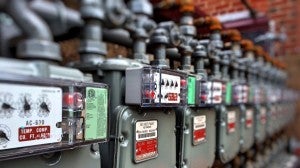 What do Farmington, NM, Oklahoma City, Lakewood, CO and Dickinson, ND have in common? These cities are in the heart of oil and gas country, and – most importantly – were locations in which the BLM heard overwhelming support for strong efforts to reduce wasteful venting, flaring and leaks from the oil and gas industry at a series of public meetings in recent weeks.
What do Farmington, NM, Oklahoma City, Lakewood, CO and Dickinson, ND have in common? These cities are in the heart of oil and gas country, and – most importantly – were locations in which the BLM heard overwhelming support for strong efforts to reduce wasteful venting, flaring and leaks from the oil and gas industry at a series of public meetings in recent weeks.
Methane is a potent climate pollutant and the main constituent of natural gas, so when oil and gas companies on public land allow methane to be leaked, burned or vented to the atmosphere, it not only impacts air quality and our climate, it also represents an economic loss to taxpayers.
Individually at each hearing, and collectively across all four, voices supporting strong BLM methane waste and pollution rules far outweighed the opposition. In the final tally, supportive statements outnumbered negative ones by more than three-to-one. This fits with recent polling that found that a bipartisan majority (fully 80 percent) of Westerners support commonsense rules to cut oil and gas waste on BLM managed lands. Read More

 Help is on the way to reduce harmful pollution in Indiana, which has the
Help is on the way to reduce harmful pollution in Indiana, which has the  San Antonio and Austin just called a
San Antonio and Austin just called a  Most Americans think their electricity comes from large power companies. In North Carolina, my home state, that might mean Duke Energy or Dominion Resources. But did you know that 42 million people in 47 states get their electricity from electric cooperatives? These member-owned electric utilities were first formed back in the 1930s to provide electricity to people living in rural areas and small towns.
Most Americans think their electricity comes from large power companies. In North Carolina, my home state, that might mean Duke Energy or Dominion Resources. But did you know that 42 million people in 47 states get their electricity from electric cooperatives? These member-owned electric utilities were first formed back in the 1930s to provide electricity to people living in rural areas and small towns. New York is on the path to transforming its electric industry. Since the
New York is on the path to transforming its electric industry. Since the